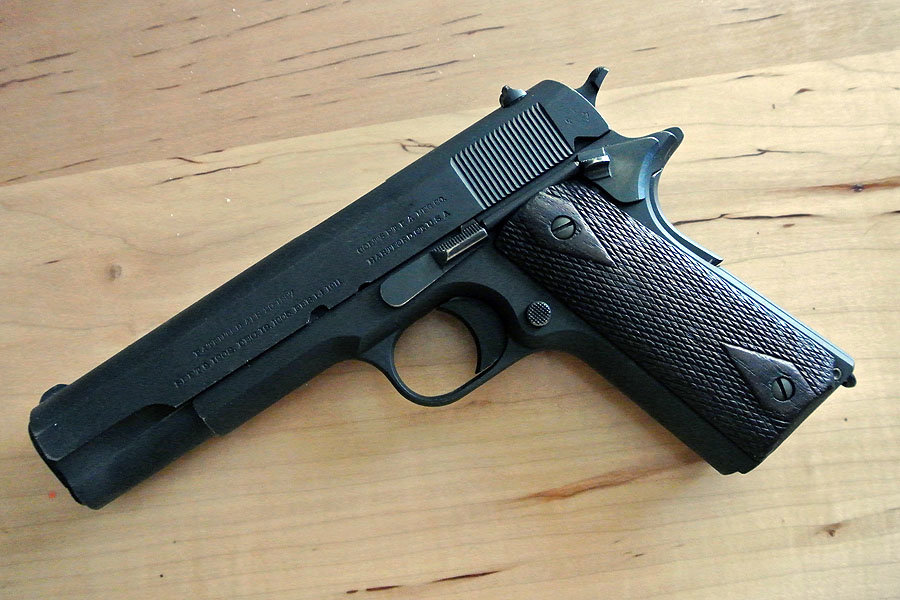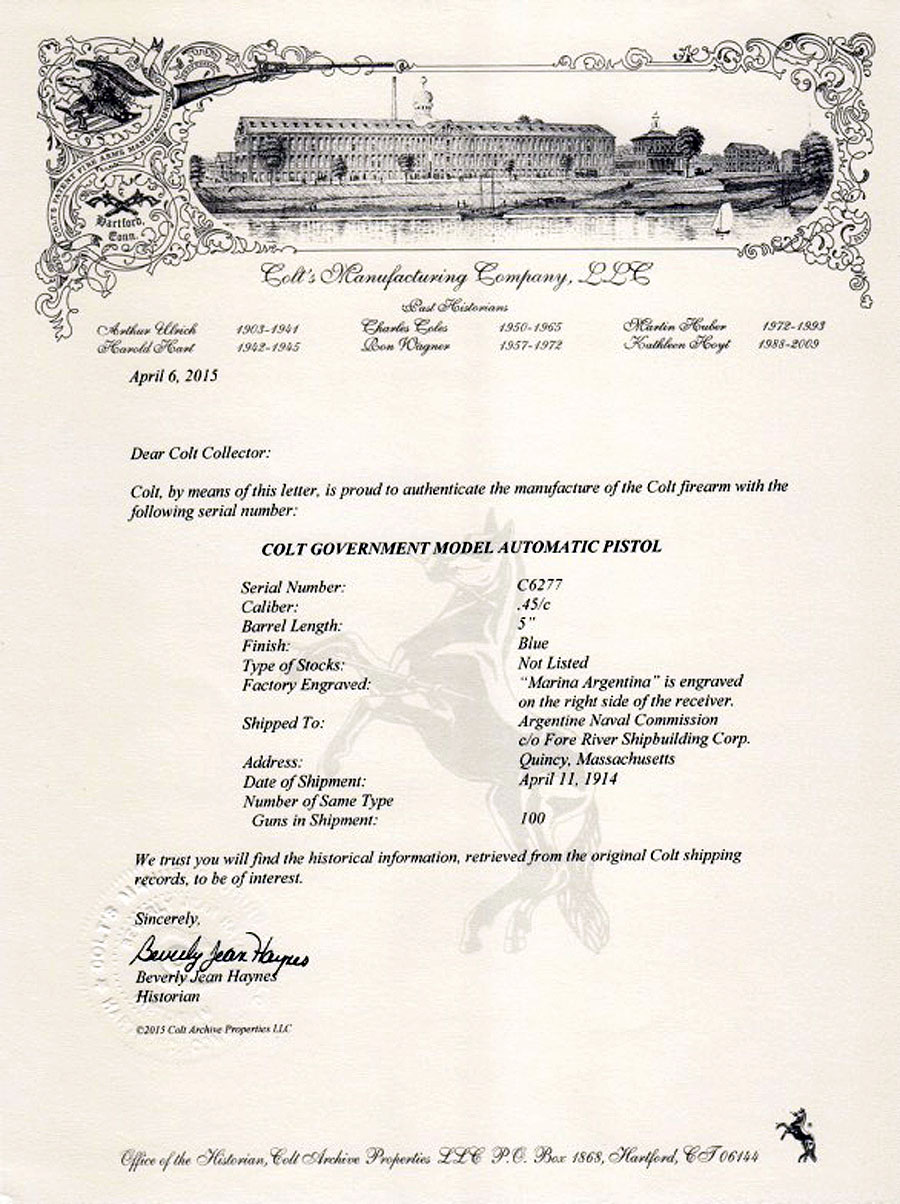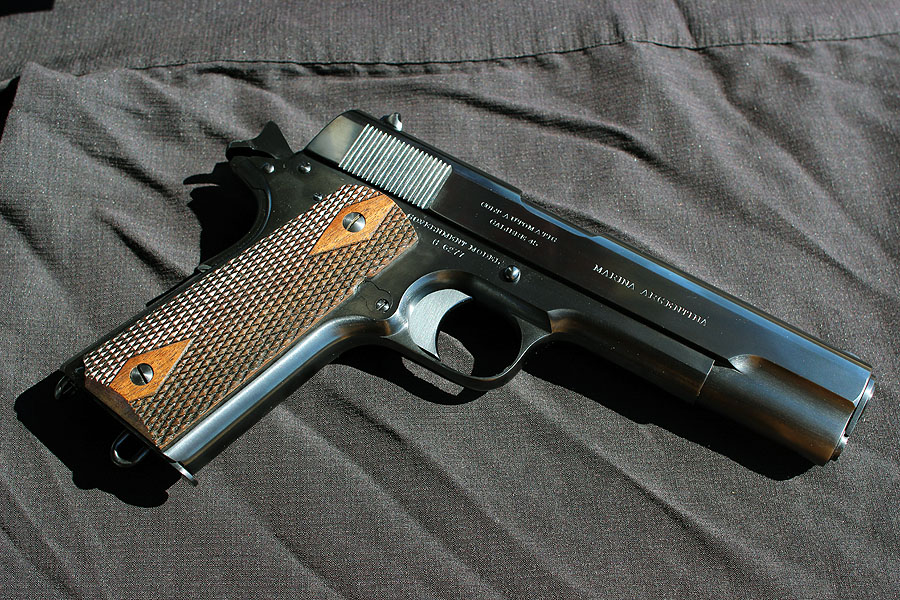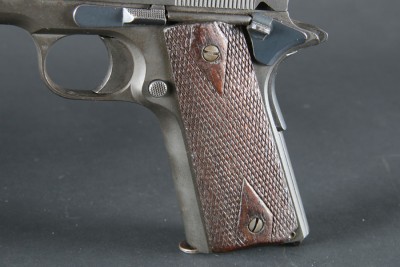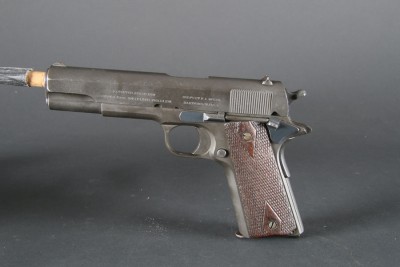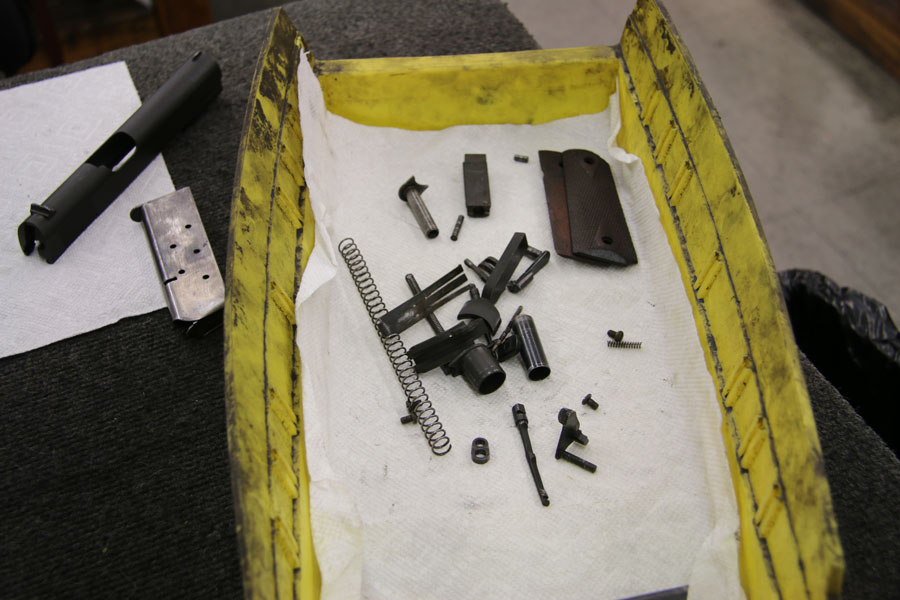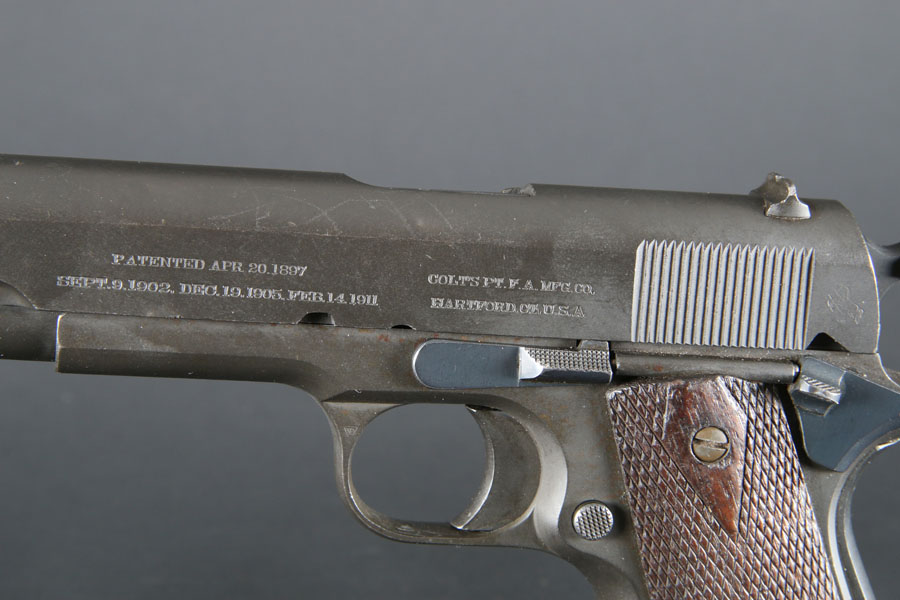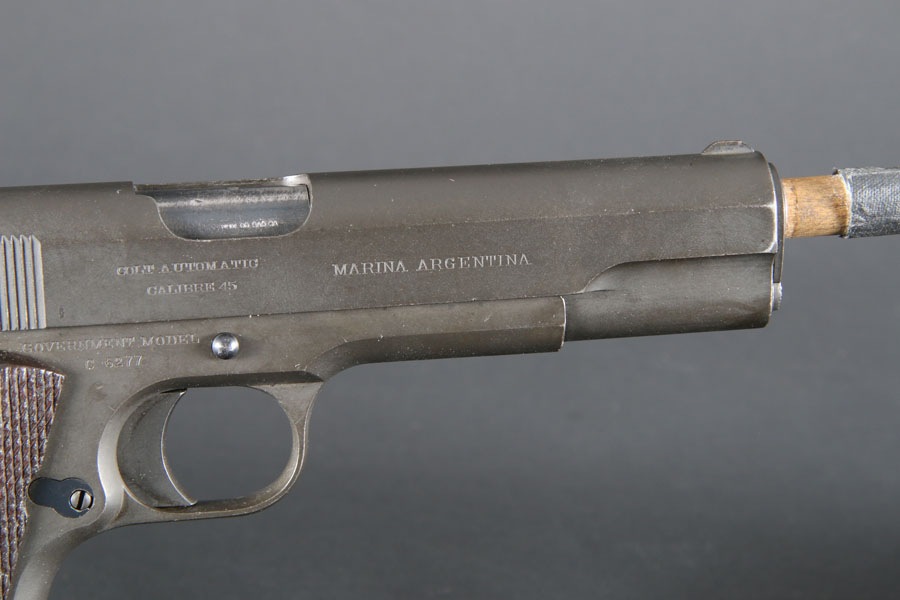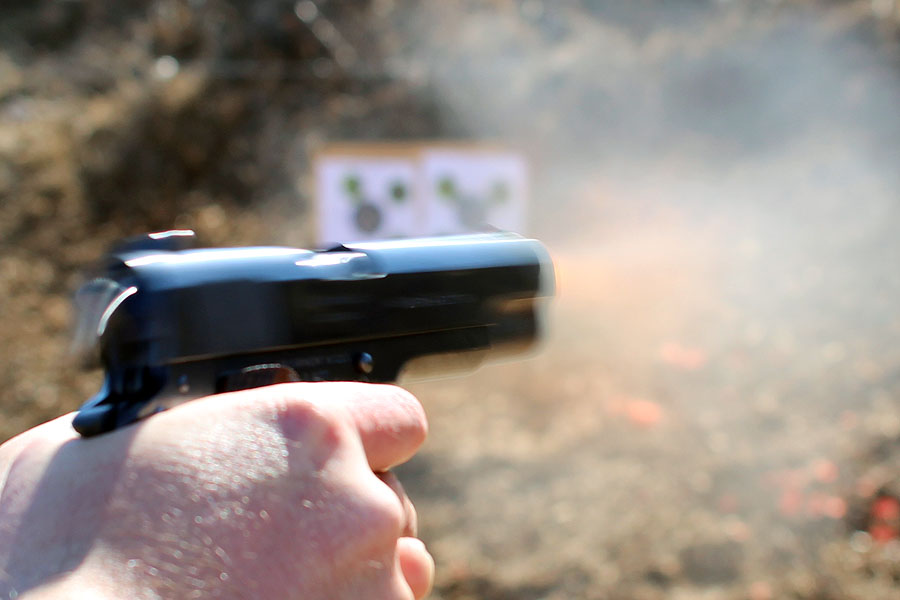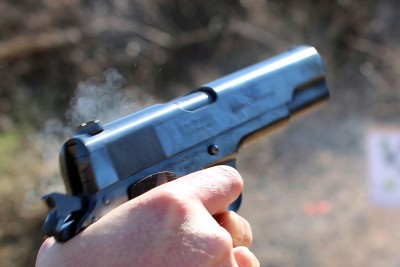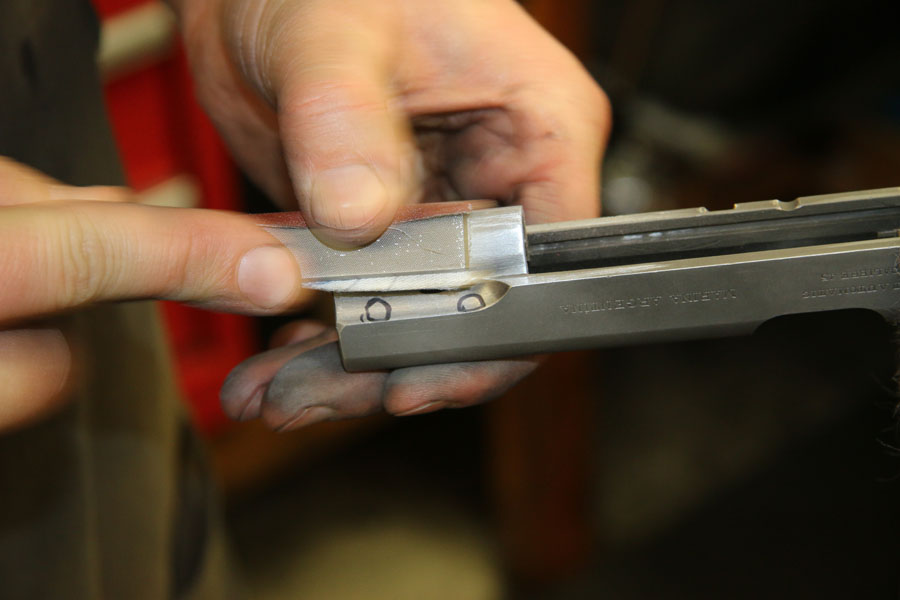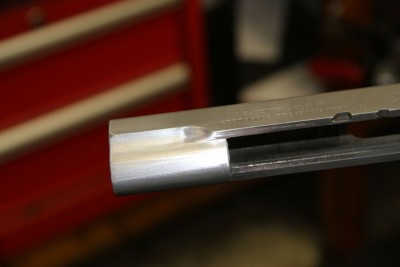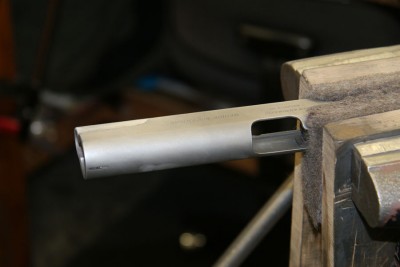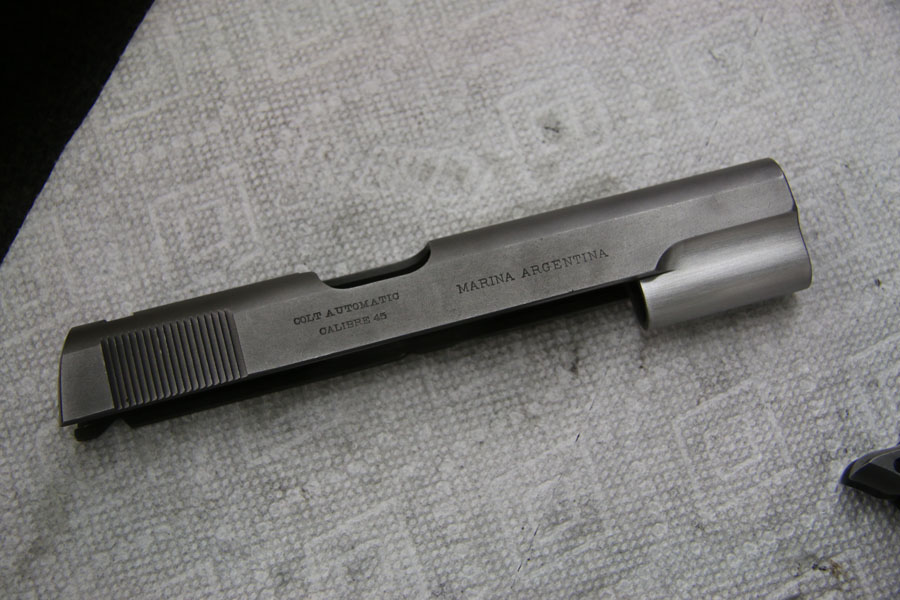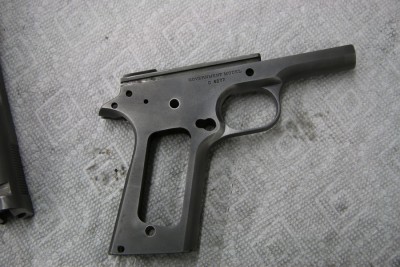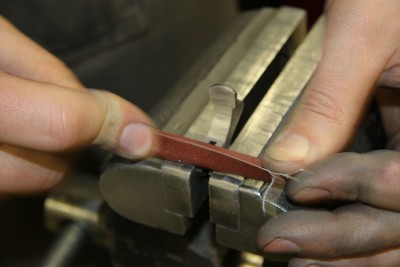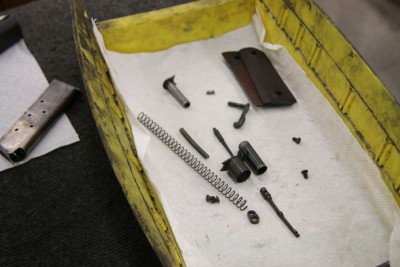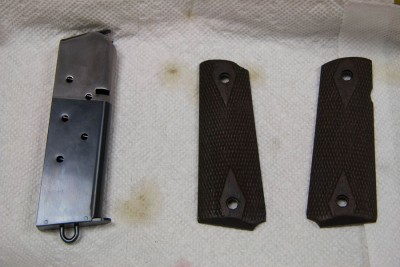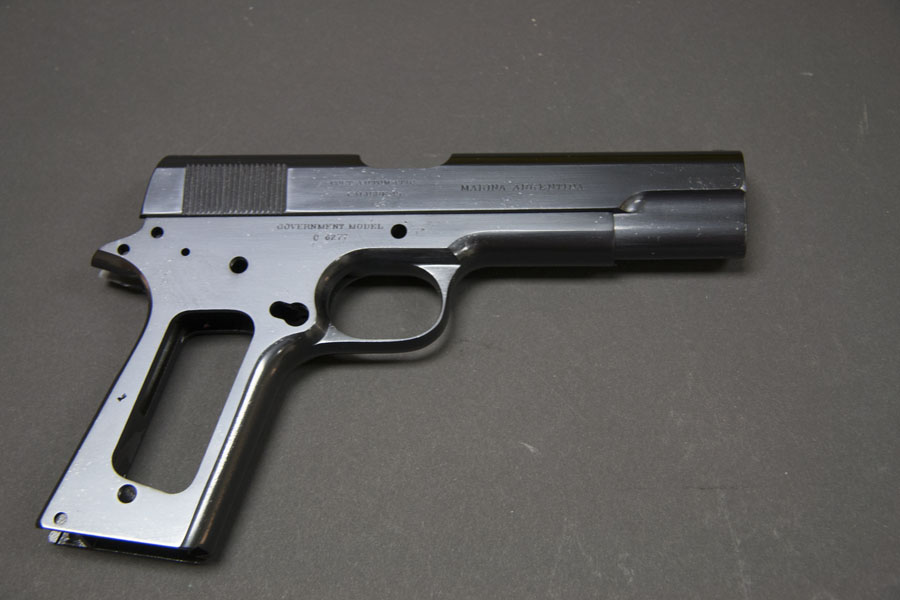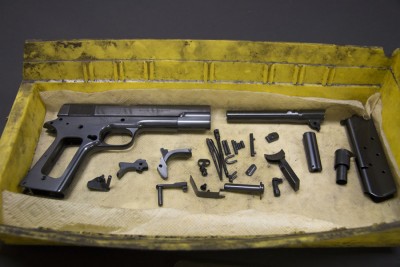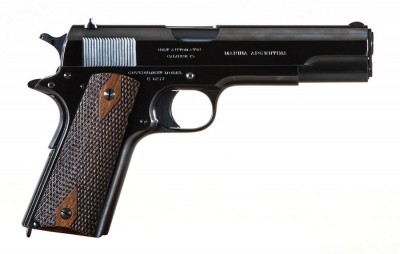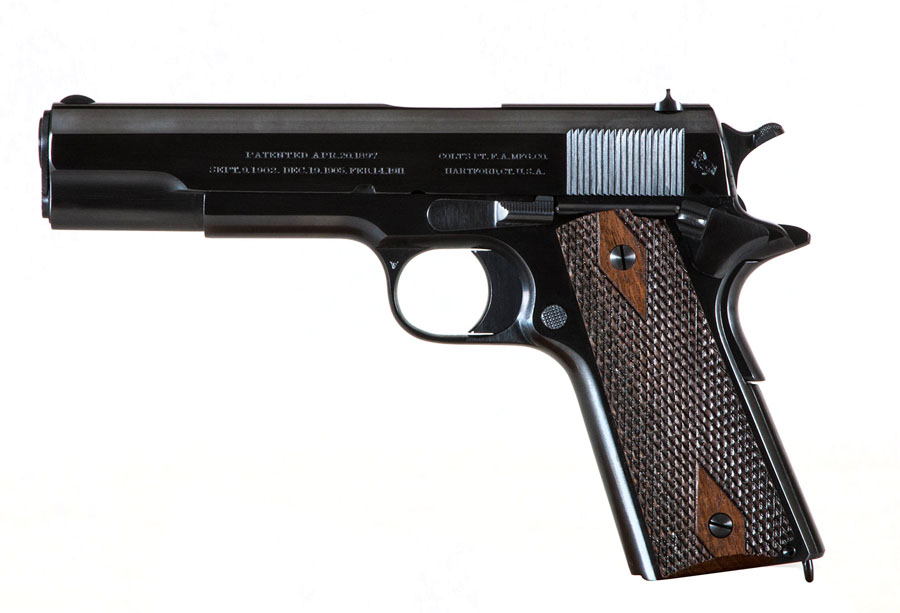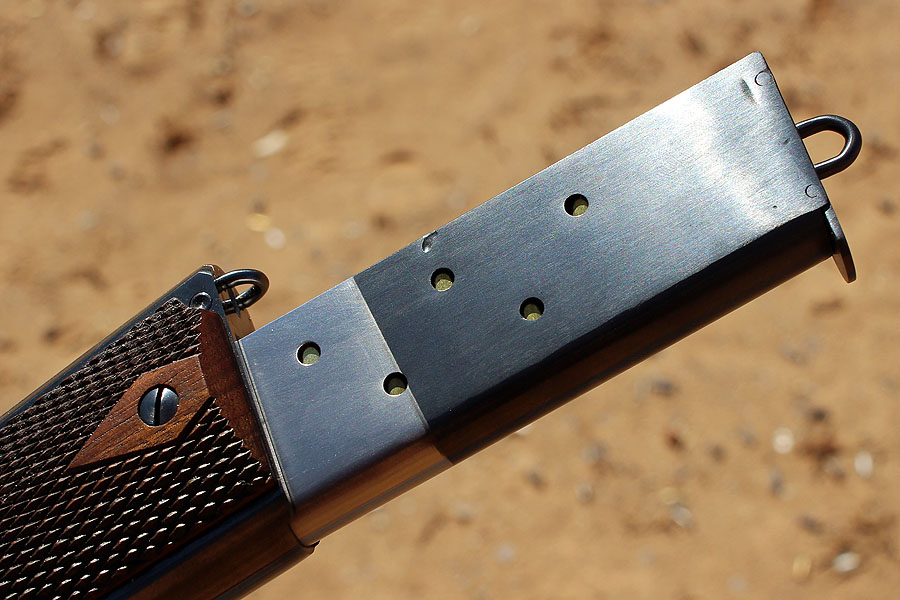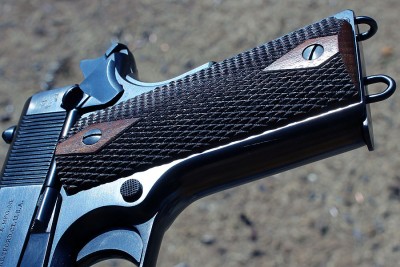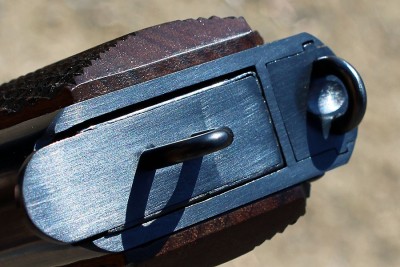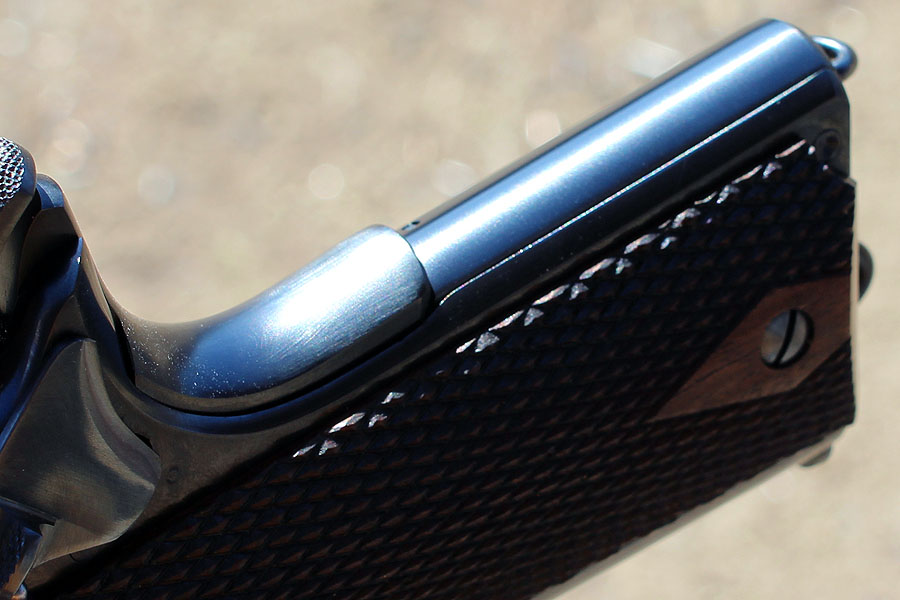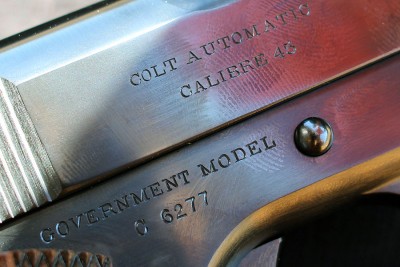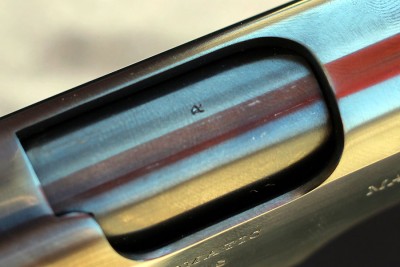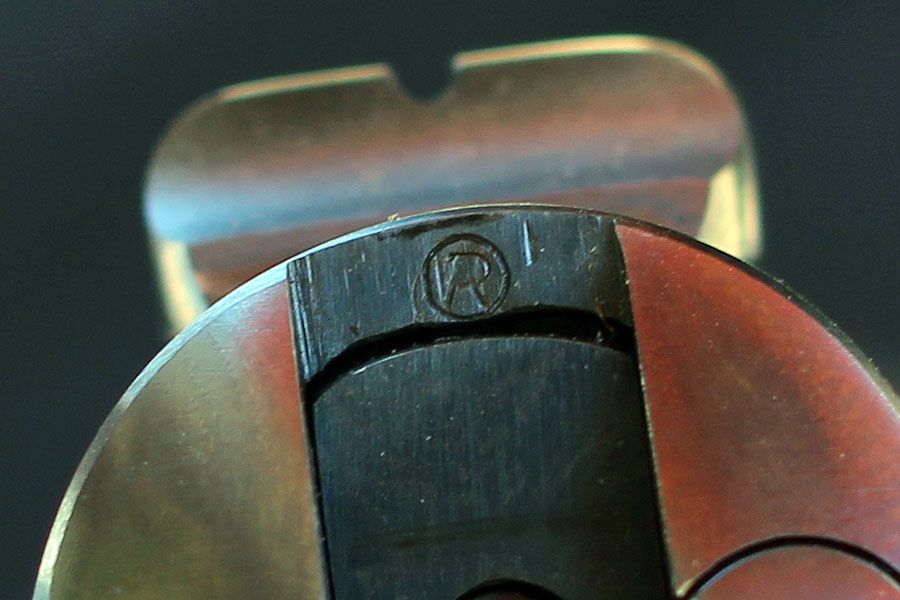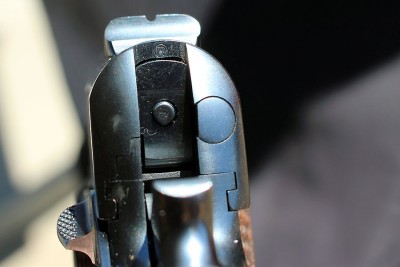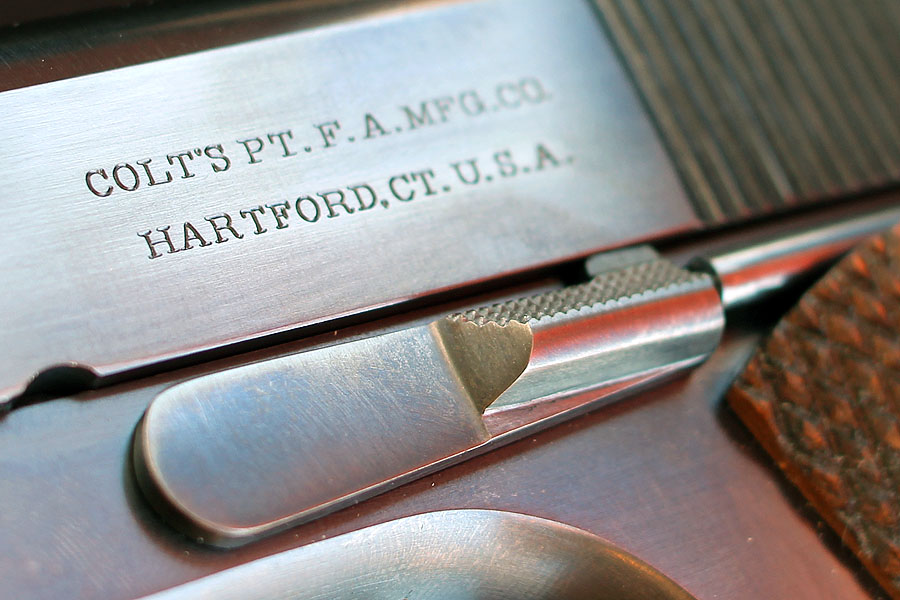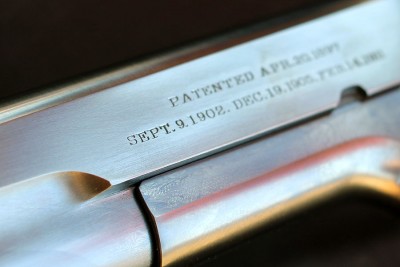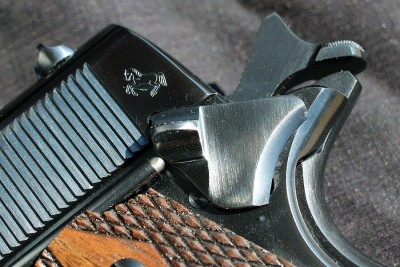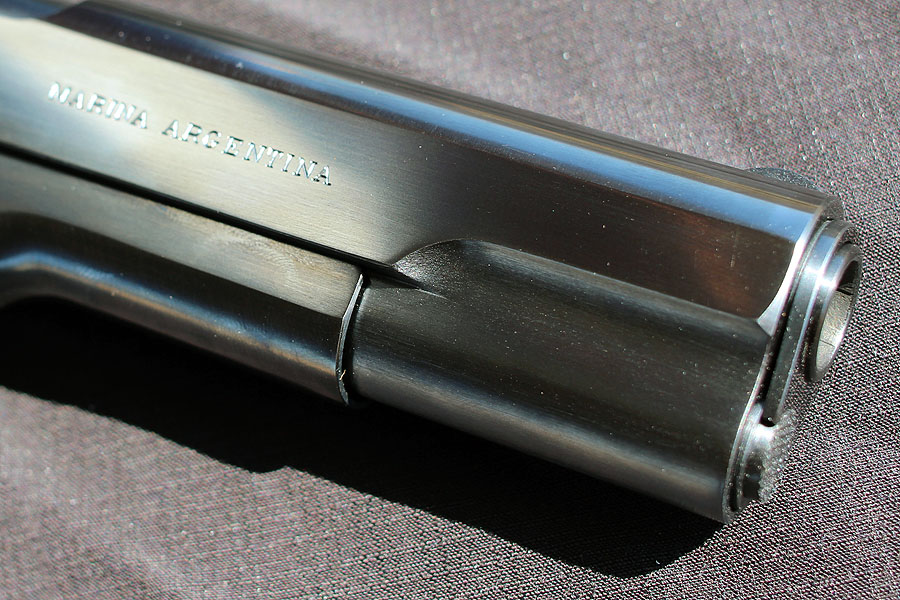[full_width]
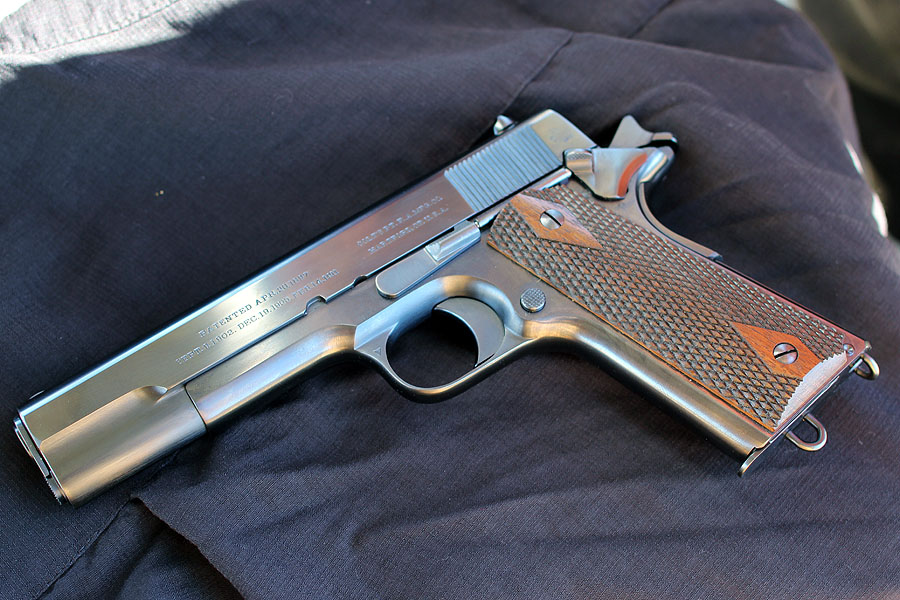
The goal of this Turnbull restoration was to make the gun look exactly like it did the day it left the factory.
[/full_width]
Read more at Turnbull: https://www.turnbullmfg.com/
Buy one on GunsAmerica:https://www.gunsamerica.com/Search.aspx?T=turnbull
Follow Turnbull on FaceBook: https://www.facebook.com/TurnbullMfg/
Dedicated GunsAmerica readers know we have something of a fixation with the restoration work provided by Turnbull. The company specializes in resurrecting relics. If you have an old gun with condition issues, Turnbull can work their magic and make it look like it just left the factory.
The Original Colt 1911
[full_width]
[/full_width]
Read our original write up of the 1913 Colt 1911 here: https://www.gunsamerica.com/blog/shooting-history1913-production-colt-1911-old-gun-review/
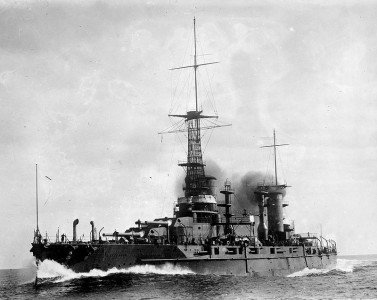
The Argentinian Navy’s Rivadavia. If you look really really closely you can see my 1911 in the holster of a sailor on deck.
This gun has an interesting history. It is an actual Colt, made in Hartford in 1913. It was produced for the Argentinean Navy, and bound for a life of hard service in South America. Only God and the ghost of John Browning know what was done to this pistol by the Argentinean armorers.
But the Saint of Single-Actions was looking out for this one. Despite the long service life. When I found it, the humble pistol was sitting on a pawn shop shelf in Reno, Nevada.
After a bit of research, I figured out that it was an American made Colt, and not one of the later contract production models that were built in Argentina (they’re almost indistinguishable, if you don’t pay attention to serial numbers).
So I sold what I could, borrowed money from a friend, and ponied up. If I remember correctly, I paid $700 for it. That was 10 years ago. Even then, I knew it was a gun I’d never carry. And my friend and I have traded custody of the gun off and on for years. We still can’t decide who owns it.
As this letter would indicate, we’re doing some archival work with Colt. Beverly Hayes, who has been so ably assisting our efforts, knows her old Colts. What we found in the letter confirmed what we’d surmised from our basic web search several years ago.
The Colt Archive services aren’t free. They charge a fee for the research they do, and the letter they provide. But it is well worth it. Even when the document doesn’t add much to your own knowledge, it is good to have–if only for insurance valuation.
And sometimes, the letters can make or break historical claims. I’m dealing with two guns now, both reported to have belonged to Billy the Kid. One, I’m sad to say, clearly didn’t. The gun wasn’t manufactured until after his death. The other has a better chance, as it was shipped in 1881, while the Kid was still kicking. But more on those two later.
[full_width]
[/full_width]
I had the opportunity to talk to Aaron Frank at Turnbull. Our conversation is below.
[one_half]Do you ever get guns in for restoration that shouldn’t be restored for one reason or another?
AF: Once we get the gun in for a quote, if there is a decent amount of original finish remaining on the gun, we will recommend no restoration. However, we will call the customer to recommend the gun not be a candidate for restoration. If the customer still wants it restored, it will be their decision at that point.[/one_half][one_half_last]
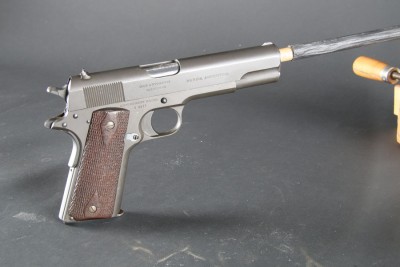
This gun had been in service with the Argentinian Navy, and had been parkerized. There was no original finish left.
[/one_half_last]
[one_half]So an important aspect of valuing an original is its original condition. Can restoration ever hurt the value of a firearm?
AF: Depending on the serial # and rarity of the gun, it can be worth more in its original condition. We will discuss this with the customer ahead of time to ensure they know what they are getting into.[/one_half][one_half_last]
[/one_half_last]
[one_half]When does restoration actually increase value?
AF: When a gun has been abused over the years, restoring will add value. The concept is this; we take a gun without life or luster and bring life back into it. The goal is to restore the firearm to its original factory condition, in most cases.
When people hear the word “restoration”, they immediately think negative. However, they do not realize you can take a non-functioning gun and make it look and work like it did when it originally left the factory. In many ways it is very similar to restoring vintage cars. The trick in all restoration is maintaining historical value. All of our finishes are done in the same manner as the time period the gun was originally manufactured, essentially, maintaining its historical value.[/one_half][one_half_last]
[/one_half_last]
When looking at a piece like this old 1911, are there any special historical considerations that need to be taken into account?
AF: Yes and no. Historical considerations do not come into play when restoring a gun. However, historical value will come into play when deciding whether or not the gun is a candidate for restoration and when assessing or reassessing the value of the gun.
[full_width]
[/full_width]
What do you do to the gun to prepare it for the work?
AF: After a quote is agreed upon by both parties, the gun will be put in line for scheduled work. If new parts are needed, they will be ordered before restoration work starts, so that all parts are in order before we start the project.
[full_width]
[/full_width]
[full_width]
[/full_width]
What work was done to this particular piece?
AF: We disassembled all parts, then polished and inspect each part for functionality. Once that was done, we restored all markings on the gun. After that we applied the time-period correct finishes. Finally we reassembled the gun and inspected it.
How long does the actual restoration take (as in man hours)?
AF: 40 to 80+ hours per gun, depending on condition and upgrade options. There have been cases where guns can take upwards of 150 hours. Turnbull does 200 to 275 of these restorations per year.
How many guns does Turnbull make for the Turnbull brand?
AF: It is hard to average since we are relatively new to the market. However, we do about 150 to 225 per year give or take 25 guns.
What kind of OEM work is done for Turnbull, and what does Turnbull do for others?
AF: We spend several months working with our outside vendors to perfect the machining they are providing before we will begin to use their products in our processes.
For other companies, we will provide finish work and other services upon request. However, due to company confidentiality, we cannot disclose which companies we hold contracts with.
Back on the range
We all like pretty guns, but I personally wouldn’t own a gun I can’t shoot. Call me crazy, but it just feels wrong. And this 1911 has, for as long as I’ve owned it, delivered incredible results.
So how well does it run after the overhaul? Almost as well as it did before? Better? Is it the same? The only noticable difference I can find is in the trigger. There’s just a touch of grit there. My thought is that the extensive cleaning may have left the trigger a bit less lubricated than it was before, and that I can smooth it out with proper care.
Otherwise, the sights are still aligned and the gun still drops lead right on target. Check out the shooting images below.
[full_width]
[/full_width][one_half]
[/one_half][one_half_last]
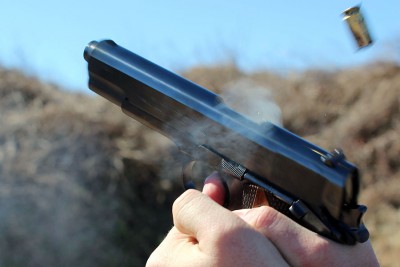
And you better watch that hammer. The original 1911 has a design flaw that the big fat beaver-tails fixed nicely.
[/one_half_last]
[full_width]
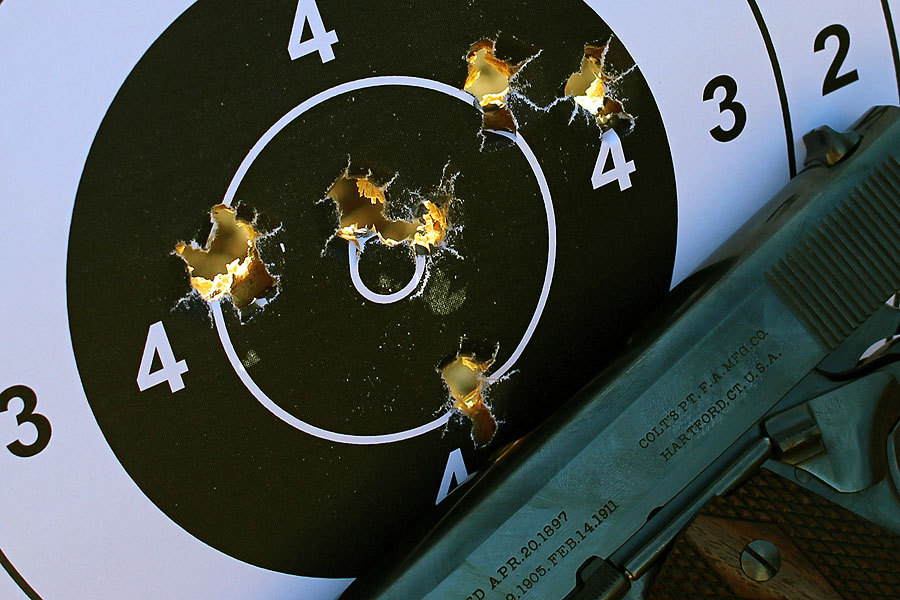
This is my handiwork from 15 yards. Not the greatest display of marksmanship, but the target was bouncing on its cables because of the stiff wind.
[/full_width][one_half]
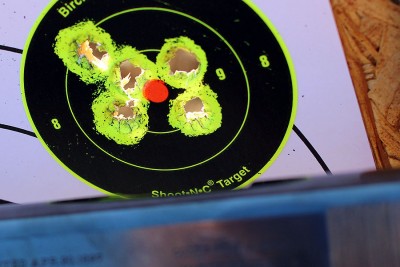
This is Sam Trisler’s shooting. Even with the bouncing, he’s better with this gun than I will ever be.
[/one_half][one_half_last]
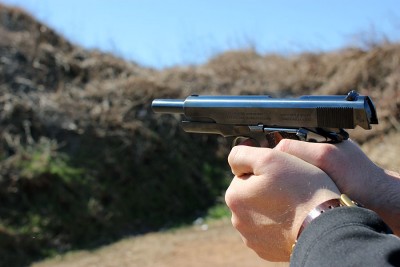
The action on this is as smooth as you would imagine. Shooting it gives you an appreciation for what was possible more than 100 years ago.
[/one_half_last]
All told, I couldn’t be happier with the revision. Turnbull has taken what was a simple conversation piece and turned it into a showpiece.
How much would a restoration like this cost? It isn’t cheap. Each gun requires a separate evaluation. Turnbull works with you , directly, to establish a price quote. How much you decide to do will have a correlation to the price. This isn’t something you’ll decide to do on a whim. WWI era 1911 overhauls start at $2,000.
From my perspective, I consider the Turnbull treatment to be a commitment to historical preservation. Others may see it as an investment in a family heirloom. Either way, you get what you pay for. The work is phenomenal.
Read more at Turnbull: https://www.turnbullmfg.com/
Buy one on GunsAmerica:https://www.gunsamerica.com/Search.aspx?T=turnbull
Follow Turnbull on FaceBook: https://www.facebook.com/TurnbullMfg/
[full_width]
[/full_width][one_half]
[/one_half][one_half_last]
[/one_half_last][full_width]
[/full_width][one_half]
[/one_half][one_half_last]
[/one_half_last]
[full_width]
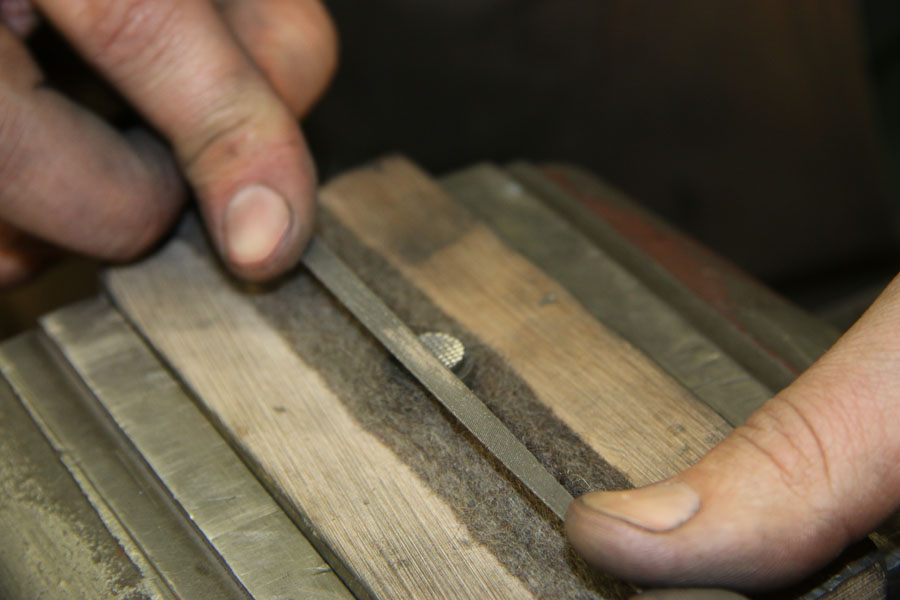
Some of the details require even more work to bring back the texture. In this case, a file redresses the checkering.
[/full_width][one_half]
[/one_half][one_half_last]
[/one_half_last]
[full_width]
[/full_width][one_half]
[/one_half][one_half_last]
[/one_half_last]
[full_width]
[/full_width]
[full_width]
[/full_width][one_half]
[/one_half][one_half_last]
[/one_half_last]
[full_width]
[/full_width][one_half]
[/one_half][one_half_last]
[/one_half_last]
[full_width]
[/full_width][one_half]
[/one_half][one_half_last]
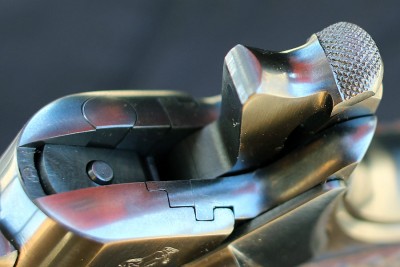
Turnbull won’t take a production gun and return something fitted like a modern custom pistol, but it will look as good as it can.
[/one_half_last]
[full_width]
[/full_width][one_half]
[/one_half][one_half_last]
[/one_half_last]
[full_width]
[/full_width
